How wings lift the plane
wings are shaped to make air move faster over the top of the wing. When air moves faster, the pressure of the air decreases. So the pressure on the top of the wing is less than the pressure on the bottom of the wing. The difference in pressure creates a force on the wing that lift thewing up into the air.
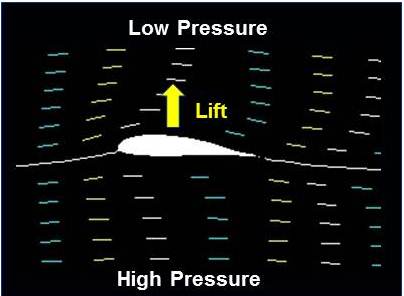
Here is a simple computer simulation that you can use to explore how wings make lift.
Laws of Motion
Sir Isaac Newton proposed three laws of motion in 1665. These Laws of Motion help to explain how a planes flies.
1. If an object is not moving, it will not start moving by itself. If an object is moving, it will not stop or change direction unless something pushes it.
2. Objects will move farther and faster when they are pushed harder.
3. When an object is pushed in one direction, there is always a resistance of the same size in the opposite direction.
Forces of Flight
Four forces of flight Lift - upward Drag - backward Weight - downward Thrust - forward |
|
Controlling the Flight of a Plane
How does a plane fly? Let's pretend that our arms are wings. If we place one wing down and one wing up we can use the roll to change the direction of the plane. We are helping to turn the plane by yawing toward one side. If we raise our nose, like a pilot can raise the nose of the plane, we are raising the pitch of the plane. All these dimensions together combine to control the flight of the plane. A pilot of a plane has special controls that can be used to fly the plane. There are levers and buttons that the pilot can push to change the yaw, pitch and roll of the plane.
To roll the plane to the right or left, the ailerons are raised on one wing and lowered on the other. The wing with the lowered aileron rises while the wing with the raised aileron drops.
Pitch makes a plane descend or climb. The pilot adjusts the elevators on the tail to make a plane descend or climb. Lowering the elevators caused the airplane's nose to drop, sending the plane into a down. Raising the elevators causes the airplane to climb.
Yaw is the turning of a plane. When the rudder is turned to one side, the airplane moves left or right. The airplane's nose is pointed in the same direction as the direction of the rudder. The rudder and the ailerons are used together to make a turn
How does a Pilot Control the Plane?
Click on the Radar Display, the Direction Finder, the Altitude Indicator and the Throttle Console parts of the cockpit for a more detailed view.
|
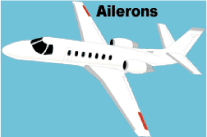 | 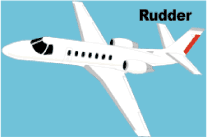 | 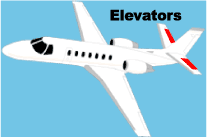 |
To control a plane a pilot uses several instruments...
The pilot controls the engine power using the throttle. Pushing the throttle increases power, and pulling it decreases power.
The ailerons raise and lower the wings. The pilot controls the roll of the plane by raising one aileron or the other with a control wheel. Turning the control wheel clockwise raises the right aileron and lowers the left aileron, which rolls the aircraft to the right.
l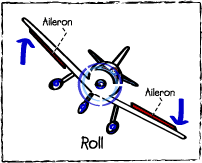
Picture of plane in roll
The rudder works to control the yaw of the plane. The pilot moves rudder left and right, with left and right pedals. Pressing the right rudder pedal moves the rudder to the right. This yaws the aircraft to the right. Used together, the rudder and the ailerons are used to turn the plane.
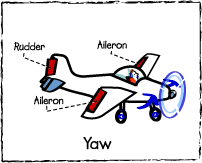
Picture of plane Yaw
The elevators which are on the tail section are used to control the pitch of the plane. A pilot uses a control wheel to raise and lower the elevators, by moving it forward to back ward. Lowering the elevators makes the plane nose go down and allows the plane to go down. By raising the elevators the pilot can make the plane go up.
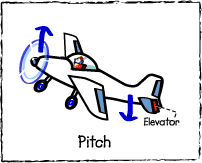
Picture of Plane Pitch
The pilot of the plane pushes the top of the rudder pedals to use the brakes. The brakes are used when the plane is on the ground to slow down the plane and get ready for stopping it. The top of the left rudder controls the left brake and the top of the right pedal controls the right brake.
If you look at these motions together you can see that each type of motion helps control the direction and level of the plane when it is flying.

Sound Barrier
| 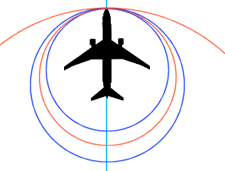 | 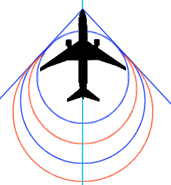
|
Sound is made up of molecules of air that move. They push together and gather together to form sound waves . Sound waves travel at the speed of about 750 mph at sea level. When a plane travels the speed of sound the air waves gather together and compress the air in front of the plane to keep it from moving forward. This compression causes a shockwave to form in front of the plane.
In order to travel faster than the speed of sound the plane needs to be able to break through the shock wave. When the airplane moves through the waves, it is makes the sound waves spread out and this creates a loud noise or sonic boom . The sonic boom is caused by a sudden change in the air pressure. When the plane travels faster than sound it is traveling at supersonic speed. A plane traveling at the speed of sound is traveling at Mach 1 or about 760 MPH. Mach 2 is twice the speed of sound.
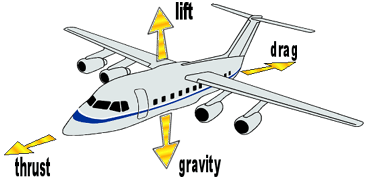
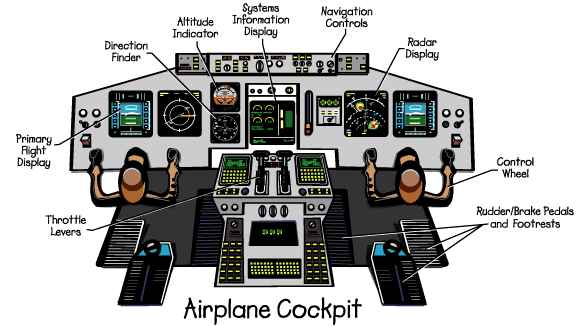
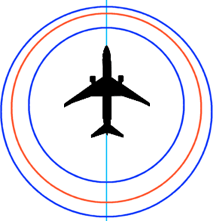




No comments:
Post a Comment